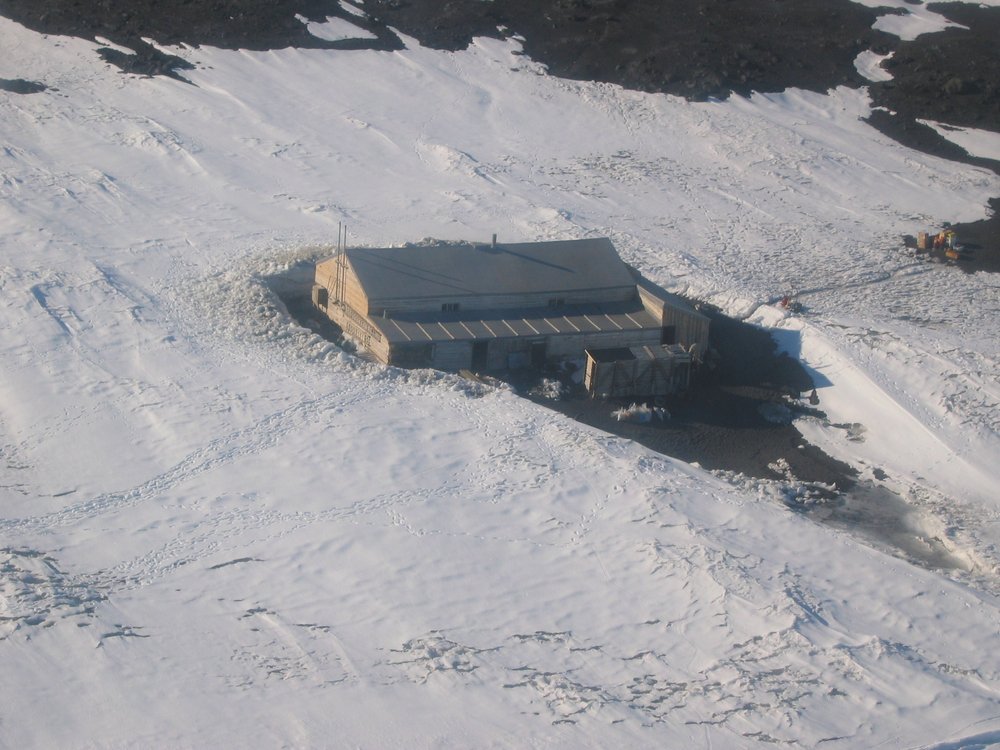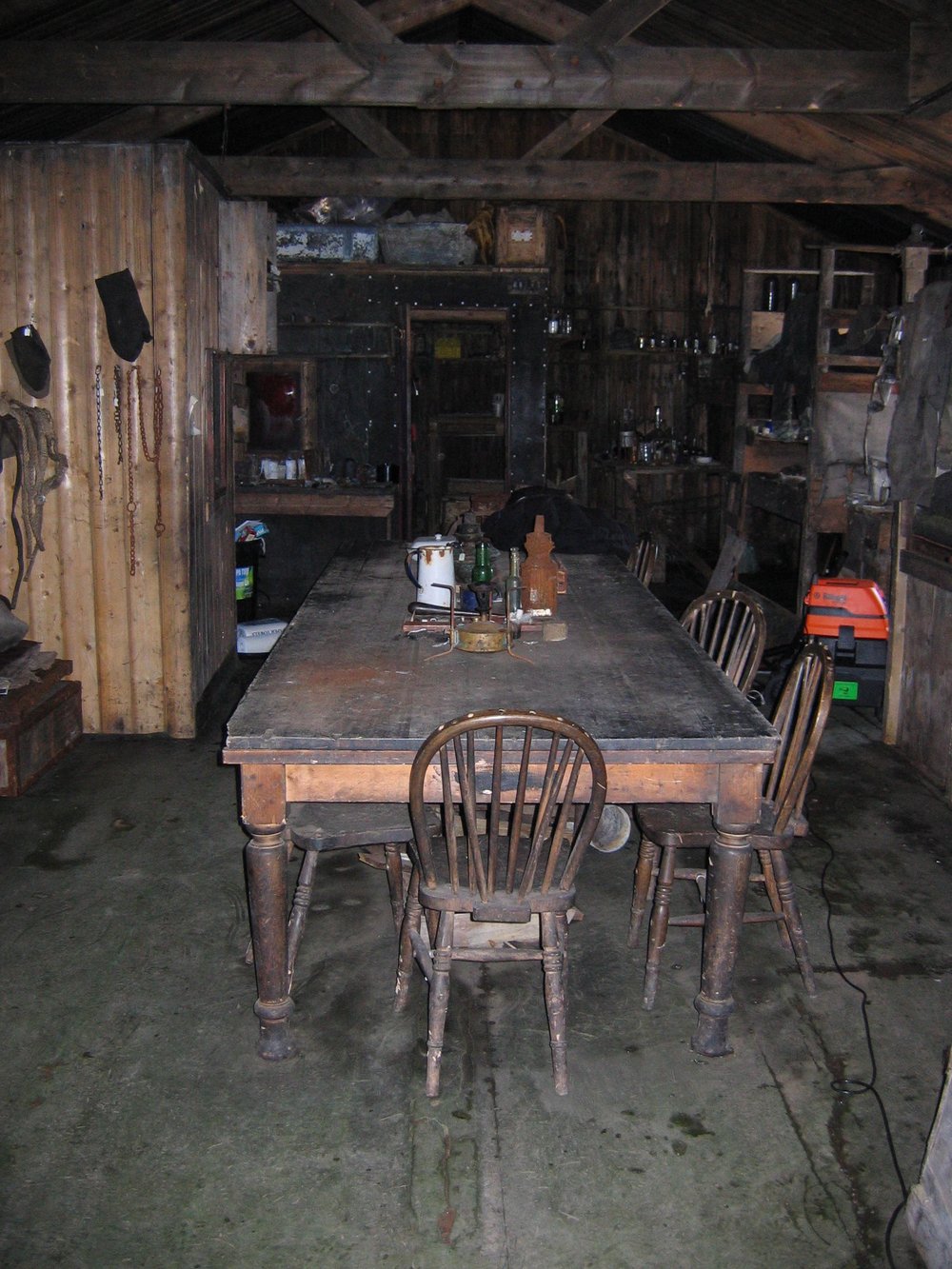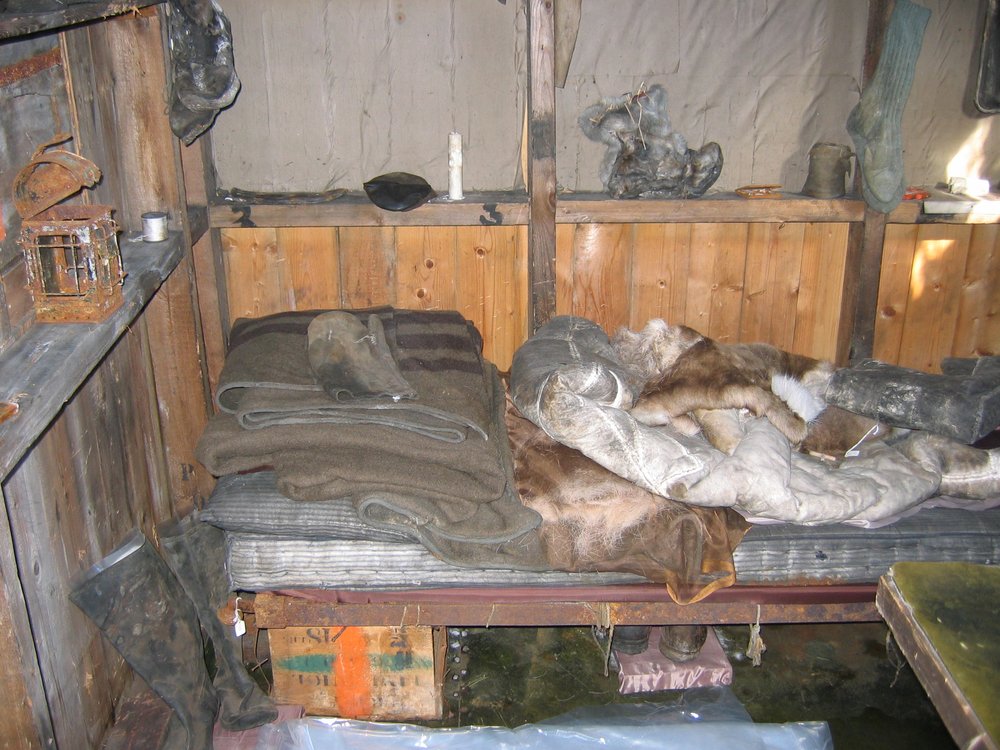 Scott's Hut at Cape Evans Since my trip to Antarctica in 2004-2005 as part of the United States Antarctic Program (a National Science Foundation Artist and Writer’s award) I eagerly follow the happenings in Antarctica every Austral summer. I await posts from my ice friends on Facebook, and I track articles on the web. Every year, something exciting happens: a ship sinks (people are rescued!), someone skis to the south pole, icebergs the size of Vermont break off and send fears of tsunamis north. This year has the usual range of news (including “Will Antarctic Worms Warm to Changing Climate?”). There are a lot of heroic events happening on the southern continent. British skier Felicity Aston has skied solo to the south pole, and will continue on across the continent. If she makes it, she’ll be the first person to solo traverse the continent under her own power alone.
Scott's Hut at Cape Evans Since my trip to Antarctica in 2004-2005 as part of the United States Antarctic Program (a National Science Foundation Artist and Writer’s award) I eagerly follow the happenings in Antarctica every Austral summer. I await posts from my ice friends on Facebook, and I track articles on the web. Every year, something exciting happens: a ship sinks (people are rescued!), someone skis to the south pole, icebergs the size of Vermont break off and send fears of tsunamis north. This year has the usual range of news (including “Will Antarctic Worms Warm to Changing Climate?”). There are a lot of heroic events happening on the southern continent. British skier Felicity Aston has skied solo to the south pole, and will continue on across the continent. If she makes it, she’ll be the first person to solo traverse the continent under her own power alone.
At age 15, Jordan Romero has just climbed Mount Vinson, making him the youngest person to summit the highest peaks on 7 continents. At 10 he completed three of these summits.
Then there is the usual disaster: a Russian fishing ship is sinking after tearing a hole in its hull.
 Inside the hut at Cape Evants (note the vacuum on the right)These events are to a certain extent the “expected” stories to come from the south at this time of the year. One historic event this season stands out. This December 14 was the 100th anniversary of Amundsen’s arrival at the South Pole. To be clear: I’m a Robert Falcon Scott woman, so I’ve focused less on Scott’s perceived rival. But the writings on Amundsen’s efficient, extraordinary accomplishment have shed new light on this Norweigan explorer's accomplishments. Imagining him and his men navigating the continent with their reindeer sleeping bags to reach the South Pole (no tweets from their expedition!) is wonderful to contemplate.
Inside the hut at Cape Evants (note the vacuum on the right)These events are to a certain extent the “expected” stories to come from the south at this time of the year. One historic event this season stands out. This December 14 was the 100th anniversary of Amundsen’s arrival at the South Pole. To be clear: I’m a Robert Falcon Scott woman, so I’ve focused less on Scott’s perceived rival. But the writings on Amundsen’s efficient, extraordinary accomplishment have shed new light on this Norweigan explorer's accomplishments. Imagining him and his men navigating the continent with their reindeer sleeping bags to reach the South Pole (no tweets from their expedition!) is wonderful to contemplate.
But the piece of news that has most moved me (being, as I said, a Scott woman) is about Scott’s grandson, who is a carpenter, traveling to Antarctica to help work on the hut his grandfather lived during the Terra Nova expedition (1910-13). It is the New Zealand Heritage Trust who is in charge of maintaining this hut, and Scott will be joining others to keep it in shape. In using his carpentry skills, he will be keeping his grandfather’s memory alive in a unique manner.
I was lucky enough to visit this hut during my six weeks on the ice. The day I flew in by helicopter, the Kiwis (as they called themselves) where there fixing up the hut. I wandered through the small hut (where someone was doing a good vacuuming) looking at the long wooden table where the men ate, the small closet where photographer Herbert Ponting processed his photographs, and the stables where they kept their ponies. There in the stable I saw the mini snowshoes that the horses wore to try and make them more mobile on the ice. A box of cracked penguin eggs stacked in a wooden box made me think that penguin eggs must make for good eating.
 The hut was dark inside, still rich with the smell of seal blubber. There were cans of cocoa left behind, and boxes that had held champagne bottles. Outside in the blazing sun the Kiwis dug out the ice that had built up against the north side of the hut. Digging out the hut is something that Cherry-Garrard describes in his excellent account of the Terra Nova expedition in The Worst Journey in the World.
The hut was dark inside, still rich with the smell of seal blubber. There were cans of cocoa left behind, and boxes that had held champagne bottles. Outside in the blazing sun the Kiwis dug out the ice that had built up against the north side of the hut. Digging out the hut is something that Cherry-Garrard describes in his excellent account of the Terra Nova expedition in The Worst Journey in the World.
I found looking at Scott’s toothbrush, still in a glass on a shelf, his bed with its reindeer sleeping bag, finneskos (reindeer boots) and mittens quite moving. I could feel the presence of these men who sweated, and dreamed together on this far continent. I can imagine that to see where you grandfather spent his last months before heading south for the pole (which he reached 34 days after Amundsen) would be incredibly special. I wish him safe journey.


